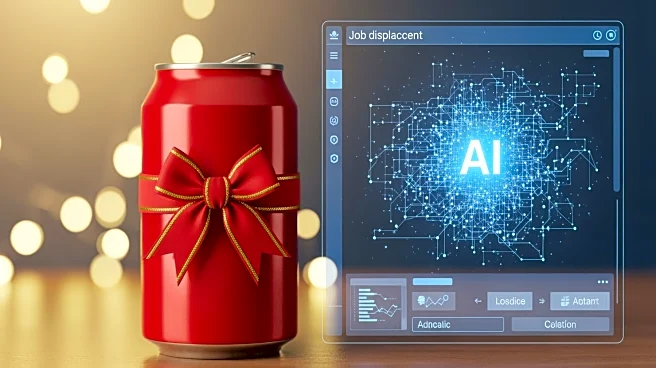What's Happening?
Coca-Cola's latest AI-generated Christmas advertisement has sparked debate due to inconsistencies in the design of the trucks featured in the ad. The advertisement, which involved a team of 100 people, showcases a series of truck scenes where the wheel
configurations vary significantly, with some trucks having as few as four wheels and others up to 22. This inconsistency has raised questions about the creative process and the role of AI in maintaining design consistency. The ad, intended to be a showcase of innovation, has instead highlighted potential shortcomings in AI's ability to ensure uniformity in creative outputs.
Why It's Important?
The controversy surrounding Coca-Cola's advertisement underscores the challenges faced by companies integrating AI into creative processes. As AI becomes more prevalent in advertising, maintaining consistency and quality becomes crucial for brand reputation. Coca-Cola, a leader in brand-building, is expected to set high standards, and any perceived lapses can impact its image. This situation also highlights the broader implications for the advertising industry, where AI's role in creative work is expanding. Brands and agencies must navigate the balance between innovation and maintaining traditional standards of craftsmanship and attention to detail.
What's Next?
Coca-Cola and other brands may need to reassess their approach to AI in advertising, potentially investing in more specialized AI models to ensure consistency in creative outputs. The advertising industry might see increased scrutiny on AI-generated content, prompting discussions on best practices and standards. Stakeholders, including marketing agencies and creative teams, may push for more rigorous quality control measures to prevent similar issues in future campaigns. This incident could lead to a reevaluation of production timelines and budgets to accommodate the complexities of AI-driven projects.
Beyond the Headlines
The debate over Coca-Cola's ad raises ethical questions about the use of AI in creative industries. As AI tools become more sophisticated, the potential for displacing human creativity and craftsmanship grows. This situation prompts a discussion on the value of human oversight in AI-driven projects and the importance of preserving artistic integrity. Additionally, the incident may influence public perception of AI, highlighting its limitations and the need for careful implementation in creative fields.













